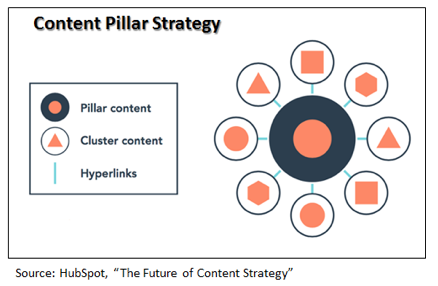Forecasting More Post-Merger New Customers Using an Inbound Marketing-Based Assessment
 I wonder if there are any of my blog readers out there who could have correctly made the following forecasts:
I wonder if there are any of my blog readers out there who could have correctly made the following forecasts:
- Gas for about $1.75/gallon.
- Both the Duquesne men’s basketball and the Temple women’s gymnastics team getting stuck for 24 hours at the same time on the Pennsylvania Turnpike in the Great Blizzard of ’16. (Wonder if there were any fisticuffs over the last Cheez Doodle...)
- Bernie Sanders.
- The continuing saga of my heartbreaking Buffalo Bills missing the playoffs for the 16th year in a row.
So that last one probably wasn’t too hard to forecast if you used your head instead of your (my?) heart. But c’mon! Really?? It’s just so sad to think that the last time the Bills' season extended beyond January 1, most of us were using videocassette recorders to capture the episode of Malcom in the Middle that we missed.
I mention these forecasting oddities because it’s also difficult to forecast the marketing and sales benefits from a merger or acquisition using standard due diligence investigations. Today’s market share is in no way an indication of tomorrow’s growth opportunities. If you don’t believe me, ask Yahoo’s CEO, Marissa Mayer.
The point that I’ve been making in the last couple of blogs and Checklist 1 and 2, is that the inbound marketing methodology is a much better harbinger of successful post-merger marketing and sales opportunities than current due diligence marketing investigations. Having gone through a number of M&A efforts, I’m well aware of the fact that marketing M&A often takes a backseat to financial, legal, and operational investigations.
But it makes sense to me that with 50 or so YES/NO/DON’T KNOW questions, any M&A team can get better and deeper insights into whether or not the merger will create greater possibilities and opportunities for realizing more visibility, leads, and sales.
More About Using Inbound Marketing for M&A Due Diligence
A quick refresher and catch up:
In previous blog posts, we addressed the use of the inbound methodology to assess (forecast) whether a merger or acquisition would result in more online visibility (Attract) and the opportunity to generate more online leads (Connect).
Not to belabor the point too much, but I still want to emphasize that using inbound marketing in the due diligence process is not a means to replace “traditional” due diligence investigations regarding marketing, but to complement those investigations in a deeper and more meaningful way. The driver behind this idea is that the true value of inbound marketing in an M&A process lies in the fact that it can be used as a harbinger of what can be.
So let’s take a look at one more part of the methodology: ENGAGE.
Doing Your Due Diligence about Lead Nurturing
At this point in your assessment, you’ve made a determination about the tools, process, and resources of the other company to assess their capabilities to get visibility online, and to use all types of digital marketing to drive prospects to landing pages where they fill out a form and get converted into a lead.
So the next part of your investigation needs to turn to their ability to nurture those leads from the top of the sales pipeline though becoming a customer or client of the firm. In other words, filling the top of the sales funnel with leads is great, but nurturing them to the point where they become clients is hard and requires a combination of strategies, processes, tools, and technologies that are becoming ever more sophisticated.
Here’s an overview of what should be in your due diligence investigations relative to “ENGAGE:”
- Use of marketing/sales SLAs
- CRM tools and technologies
- Marketing automation strategies, tools, and technologies
- Contextual content strategies
- Lead scoring protocols
There are few more criteria that we recommend, and you can see them in our Due Diligence Part 3 Checklist, here.
What to Do With All of These Great Inbound Marketing Insights You Now Have
If you’ve used all three checklists to complement your marketing due diligence, you’ll have a pretty good idea of the newly formed organization’s marketing strengths, weaknesses, and opportunities. The “threats” (if you’re a fan of SWOT Analysis) come in the form of seeing your competitors do what you should be doing. It may be time to build a new kind of marketing organization that’s infused with the inbound marketing methodology for getting more visibility, leads, and new business.
Hopefully, one of the organizations involved in the merger or acquisition will have inbound marketing processes and technologies in place that can serve as a foundation for creating more marketing synergies between the two companies.
Absent these features and capabilities, it may be time for taking a critical look at making improvements in the way of attracting, engaging, and connecting with prospects that can benefit all parties involved in the merger or acquisition.
Last but not least, I’ve got a note for the Pegulas and Rex Ryan:
Now that I’m done with my thoughts about due diligence, if I can figure out a way to apply the inbound marketing methodology to securing a 2017 playoff slot, you’ll be hearing from me!
.png)







Leave a Comment